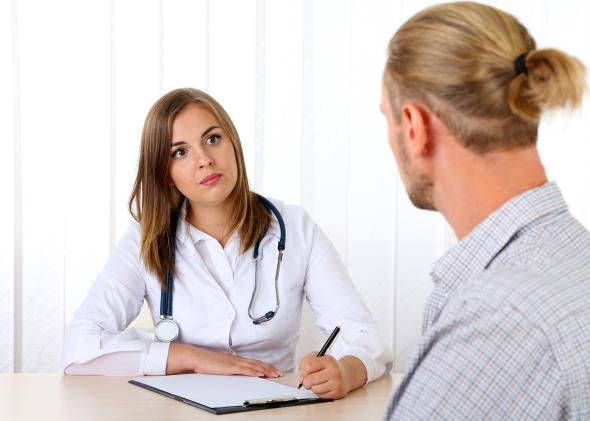A transgender man struggles with how to tell his befuddled doctor that he needs a Pap smear. An out lesbian woman grows impatient with a physician who keeps assuming she must have been subject to sexual abuse as a child. A gay couple bring their sick child to the emergency room only to be asked by the admitting clerk, “Which one of you is the real father?” And a young woman discovers she was born male, with testes, but was surgically sex-changed in infancy because her phallus developed much smaller than the average male’s.
These are the kinds of real-world clinical situations that have been motivating medical education experts to revamp American medical school curricula, to improve care for patients who may be lesbian, gay, bisexual, transgender, or born with “differences of sex development” (that is, the less common forms of sex development, or what is sometimes called “intersex”). Numerous medical institutions, including the Institute of Medicine and the Gay and Lesbian Medical Association, have been pushing to bring American medical education up to speed with the needs of these populations.
This week the Association of American Medical Colleges is putting out a new comprehensive resource guide for medical educators. The free publication, for which I served as an unpaid contributor, includes 30 specific recommendations as to what a newly graduated physician should be expected to know and to be able to do for patients with diverse forms of gender identities, sexual orientations, and sex development histories.
Our AAMC group hopes to help physicians be prepared to understand and to care for children, adolescents, and adults who may be LGBT, “gender nonconforming” (i.e., not meet cultural expectations for their genders), or born with differences of sex development. These populations are already at increased risk for harm, and the last thing members of these populations need is for more harm to be accidentally added by medical professionals who aren’t well prepared.
For too long, education around the care of these populations has been cordoned off into special areas of the medical curriculum: When AIDS is taught, then gay men are discussed; when genetics is taught, then one or two forms of differences of sex development are covered. What we need are medical curricula that actively integrate the teaching of sexuality, gender, and sex development across the disciplines, throughout the four years of medical school and into residency training.
When this happens, then all patients will begin to benefit from doctors who are knowledgeable and comfortable talking about each patient’s own unique body and life history. Physicians will be able to help patients understand the differences between our biology and our personal identities, to learn how to have healthy and positive sexual experiences, and to manage the stresses that come with social systems that may unjustly oppress people just because they don’t fit into overly simplistic categories.
In producing our recommendations, our group—as others have—also recognized that change has to start at home: that medical schools need to improve their institutional climates to support faculty, students, and staff who themselves are LGBT, gender nonconforming, or were born with a DSD. We believe that once doctors start to recognize that the spectrums we are talking about are all around them in their own institutions, a deeper respect for the concerns for these patients will emerge. We will also then start to see an end to the kinds of harassment that have too long been visited on physicians who have dared to be out about being LGBT.
Given how radically the culture around medicine is changing, with these educational reforms inside medical schools, perhaps as soon as 10 years from now we will see a new world.
A physician who knows a patient is a transgender man or transgender woman will know exactly what screening tests that patient needs to stay healthy. A physician encountering a lesbian patient will not assume she “got that way” because she was sexually abused. A gay couple bringing their sick child to the ER will be treated with the same respect and care as a straight couple. And adults who were born with relatively unusual forms of sex development will already know their medical histories, and their doctors will understand them. Children who are variant in terms of their sex or gender identities will encounter doctors who recognize their real needs and their strengths, and will know how to encourage their families to do the same. The needs of patients will come before other social norms.
